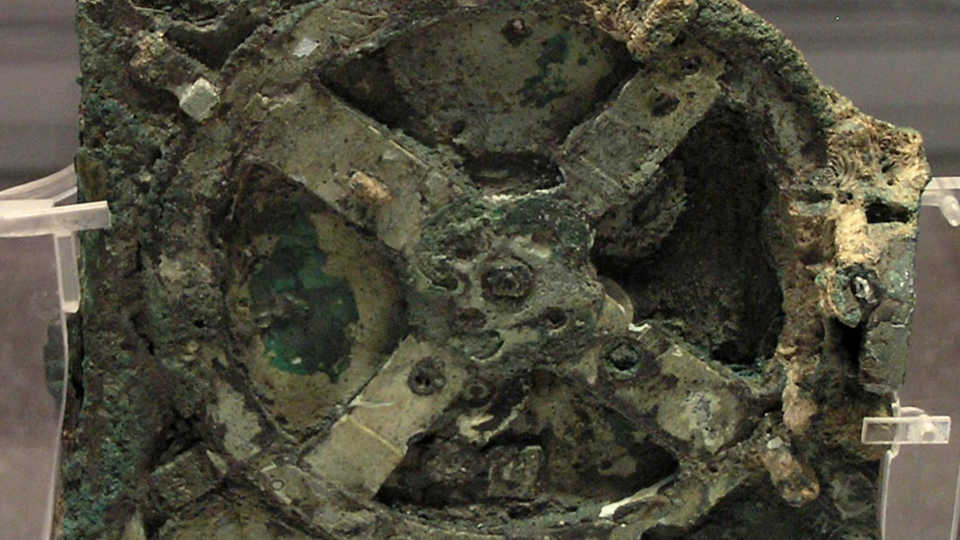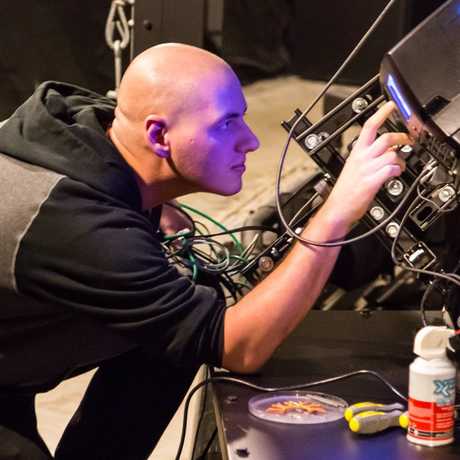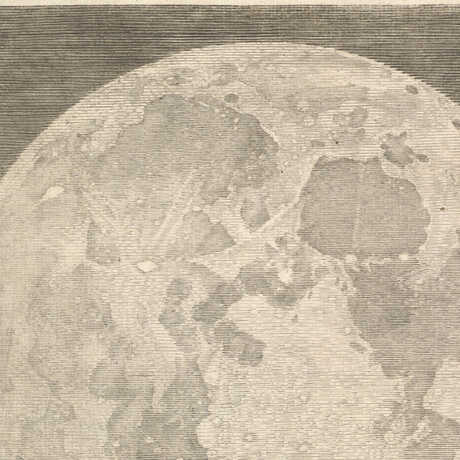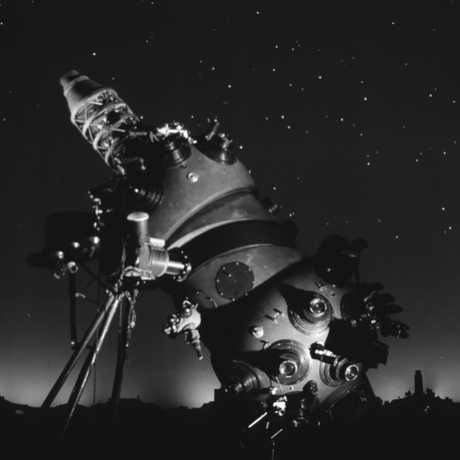“[He] loved machinery in the way some other men loved God, women and their country.”
- Richard McKenna, the Sand Pebbles
Our staff have recently embroiled themselves in a debate about planetarium technology (see here and here). And the point-and-counterpoint was enough to summon up some thoughts from us on the planetarium’s basement engineering team to speak for the technology we maintain and improve daily. The debate among planetarians themselves, and even our audiences, about what is the “better” or “best” planetarium experience has been raging since digital projection was introduced into the planetarium field almost 40 years ago when the Evans & Sutherland computer corporation introduced their first prototype Digistar digital star projector. But, to reference another “Thoughts from a Planetarian” column, I think to appreciate the place of technology in this debate, I should revisit what a planetarium is.
Is a planetarium a dome theater? It can be. Is it the software that runs that theater? I think so. Is it the projector? Maybe. Is it an orrery or an armillary sphere? Considering these used to be called “planetariums” and I have one tattooed on my right arm, I definitely think so. The Antikythera mechanism? Why, I’d call that the oldest planetarium we know. And I think there’s an important legacy and continuity when we use this inclusive definition of “planetarium.”
In modern times, planetarium has become synonymous with projection planetarium, an invention just under a century old. In August 1923, on the rooftop of Carl Zeiss optics factory in Jena, Germany, the first planetarium projector was switched on. The “Wonder of Jena” astonished audiences and earned superlatives from journalists. The refined machine was delivered to its home in the Deutsches Museum in Munich, Germany, the next year, and museums around the world clamored to have their own. A handful were delivered to planetariums in the United States before World War II. When Jena was partitioned into East Germany after the War, Zeiss’s star projectors would become unavailable in the United States for decades, and thus the visionaries at Morrison Planetarium embarked on their mission to reinvent the technology (and make many unique improvements along the way—including the never-replicated carborundum grains for stars).
The Deutsches Museum’s projection planetarium was originally intended to be paired with a ceiling-mounted orrery of the planets, but the projection planetarium’s popularity far outstripped its companion. Why? Maybe because in the 1920s, decades of industrialization had filled cities with electric lights (and in many cases blanketed them with the smog of coal fires). Humanity’s constant companion, the night sky, had become fainter and dimmer, if not invisible, to city dwellers. The projection planetarium gave urbanites back something they had lost.
In our modern world it can be hard to appreciate how deep the connection to the sky is with human culture. It doesn’t seem unreasonable to trace astronomy back to being one of the oldest and most fundamental of the sciences. That the night sky, with its spangling of stars and bizarre, slow motions of the planets, was one of the first great mysteries to our ancestors. A mystery so great that our stone- and bronze-age ancestors around the world apparently put their greatest social efforts into building observatories to help track the motions of the sky. And these observatories were of critical importance to early human society: we could not have built a calendar without the sky. Any of us knows from our own experience that year over year, the blooms of spring, the first snows of winter, the color changes of autumn do not happen on exactly the same day each year. As humans founded the first settlements and shifted from hunting and gathering to agriculture, they had to understand when to plant and harvest crops. There was no more accurate way to track when to plant and harvest than by tracking the annual shift of the stars at sunset and sunrise as the Earth loops around the sun and the altitude of the sun as the seasons change. The first astronomers, tracking this motion (even if they couldn’t explain it), approximated the length of the year in cultures around the world. Is it any wonder they were credited with incredible, predictive powers and for thousands of years ended up employed as the closest advisers to chiefs, kings, queens, and emperors?
The sky was also our first library. Although some have derided the constellations as “bronze-age graffiti,” I think they maintain an important legacy: around the world, before writing, before papyrus, before clay tables, before pictographs, humans used the random spatter of stars in the sky to remember their most fundamental stories—the myths they used to understand the world around them. We only have the many-times-removed legacy of these ancient oral traditions left to us, but they still reverberate against the core of our imaginations.
I say all this to give context for why we have been building planetariums—in one form or another—for thousands of years. The Antikythera mechanism, an ancient Greek mechanical computer discovered in a shipwreck in 1902 (and not understood until decades later) is a series of gears and dials that simulate the motion of the Sun and Moon (and possibly the planets) for predicting eclipses and constructing calendars. In short: it is a mechanical planetarium. The oldest surviving, but such an elegant device it is surely the successor of many years of refinement. Roman authors reported that a century before the Antikythera Mechanism the famed mathematician and inventor Achimedes was a master of “sphere-making,” interpreted as building mechanical planetariums. Only by constructing a simulation of the sky can we fully understand it. Astronomy is largely an observational science, but one that takes hours, days, months, years—even eons—to thoroughly observe. Our simulations allow us to speed up, reverse and pause time and the accompanying motions of the sky expanding our understanding beyond the lifetime of any individual astronomer.
The projection planetarium was one iteration of this technology, realized after thousands of years of work, and the opto-mechanical projector a natural evolution of the geocentric gear-mechanisms of these most ancient planetariums, possible only in the era after Zeiss’s opticians, particularly Otto Schott and Ernst Abbe, had succeeded in turning glass-making into a scientific enterprise.
The modern digital planetarium is yet another iteration of this technology. And one that is not limited to the dome theater. The function of the planetarium is accessible to anyone with a computer that can run any of many planetarium softwares. What was once the most valuable technology in the world can be experienced in any home.
The modern planetarium theater should, ideally, provide a continuation of not just the experience of the first audiences in Jena a century ago, but one adapted to our modern era. For most of the humans, their lives are more urbanized and skies more light polluted than ever. Recreating the experience of the night sky is something digital planetariums cannot do well. Digital projectors do not yet have the dynamic range or pixel density to perfectly simulate the pinpoint gemstone look of the stars in the sky. The wise planetarian should not equate this simulation as a replacement for that experience. Rather, digital planetariums make this compromise to utilize their other features.
An opto-mechanical projector is, by necessity of the gears and lenses, always locked into a view from Earth, which worked well when that was the limits of our practice of astronomy. The digital planetarium extends the didactic potential of the planetarium into the modern age. We know the stars are not fixed points of light, but globes of hot plasma positioned in a three-dimensional universe, and drifting into new positions over thousands of years. Only a digital simulation can let the audience drift through space and time to experience the stars in this more complete perspective. In an age where we have had an almost continuous presence of robotic explorers on Mars for nearly 20 years, a digital planetarium can present our detailed observational data of Mars in a way that makes it more than just a point in the sky or a ruddy circle in a telescope, but a world that can be visited and experienced. Only through digital simulation can we go beyond the visible stars in the sky, visit exoplanets around distant suns, and fly past the Andromeda Galaxy (the most distant object that can be seen with the naked eye, and yet one of our closest neighbors in the Universe). We can sail into the depths of space to experience the web of galaxies that forms our universe, as scientists of the last century have pushed our observation of the Universe to the edges of what we can see—including to the beginnings of time as the languorous speed of light still carries the glow of the infant universe to our telescopes.
These abilities of the planetarium are not a replacement for the optical projectors of old, they are a complement to them, and an evolutionary descendant. Planetarians of the digital age stand on the shoulders of giants—tremendous giants from Bauersfeld and Straubel who invented the projection planetarium, to Mayan Temple architects, to Archimedes, to the mistiest reaches of human prehistory.
Ultimately, and especially in this age when planetarium software and astronomical knowledge are available to anyone with a computer, the point of the planetarium theater has to be about offering something more. Planetarium theaters are not about the technology, they are about connecting humans with each other, and to the Universe. The connection between researchers, scientists, and artists in an immersive environment, where audiences from dozens to hundreds can have a shared experience. In this sense, any planetarium technology is just a vehicle for this experience. It is a tool in making this connection, but the connection is not reliant on the technology itself. A moving planetarium show can be experienced under an opto-mechanical sky just as it can be enmeshed in digital projections of astronomical datasets (or a simulated digital coral reef, or in the xylem of a tree, or any of the other possible experiences digital planetariums have opened up).
Almost certainly, projectors of any kind are not the future of the planetarium. After years of working with audio-visual technology whenever a friend tells me they are installing a projector at home I always ask “why?” because projectors are trouble. They rarely can compete with active displays for brightness, color and contrast. They wear down over time. They lose brightness. Dust collects in their light paths and lenses. They often need regular, expensive lamp or light-engine replacements over time. They are a compromise. And surely the next steps of technology will be an improvement, but yet another compromise. American Planetarium pioneer Armand N. Spitz wrote in 1967: “You may have heard me say many times that, in my opinion, the full potential of planetarium (and I use the word in its broadest possible connotation) has yet barely been scratched.” I think that 50 years later, that remains true. Just as the sky was an early repository for human imaginings, planetariums are theaters of our imagination, and technology will never catch up to the boundlessness of imagination.
Digital projectors are a compromise. Opto-mechanical projectors are a compromise. None of this technology can replace the experience—as I first had as a kid on a beach in Mexico—of standing under a truly dark sky. Seeing the ghostly arc of the Milky Way rising above, and thousands of stars glimmering against velvety black space. An experience that gets further and further away from the regular experience of most of humanity, and hopefully that we may view planetariums as a companion of, but never a replacement for. But they can create new experiences, they can take us places and times we cannot know directly, and there is a value in these experiences, however they are crafted.
“We shut ourselves in and allowed our eyes to get accustomed to the dark. It's an extremely creepy feeling because the total Darkness makes you feel as if the walls and ceiling are crushing in on you. But we got over that and pulled the switch. The caps fell away and the roof glittered all over with little dots of light—”
“Well?”
“Well—nothing. That was the whacky part of it. Nothing happened. It was just a roof with holes in it, and that's just what it looked like.”
Images by EdieT (Jena), Marsyas (Antikythera), and Dan Tell






